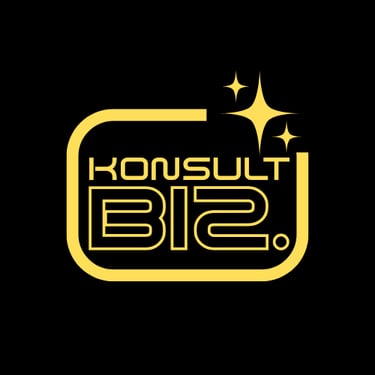
This Startup Hit $10M Without a Single Employee
Built on Automation a Solo Founder Scaled Faster Than VC Backed Teams
It sounds like a myth, a startup fairy tale. No team, no investors, no payroll, yet ten million dollars in yearly revenue. In 2025 this scenario is plausible. A new stack of generative AI tools and cloud automation lets an individual founder assemble the functions of a small company, from coding and testing to marketing and support, with minimal fixed costs.
Why this is possible now
Three shifts matter most. First, controlled experiments show that modern AI assistants increase output speed and quality for core knowledge work. An MIT study on generative AI and professional writing found large gains in task completion time and quality for ordinary professionals. Microsoft Research ran a controlled experiment on developers and reported roughly fifty six percent faster completion for a programming task when using an AI pair programmer. These are gold standard tests and they explain how one person can do the work of several. Second, policy research from the OECD in 2025 concludes that generative AI lowers the barriers to entrepreneurship, automates routine tasks, and augments workers so that small firms can achieve scale that once required teams. This is not marketing language, it is a synthesis of experimental evidence and enterprise case studies across the OECD area. Third, the market is full of nonemployer businesses, and a visible slice now earns seven figures. The United States Census Bureau reports continued growth in firms with no paid employees, almost thirty million in total, and provides detailed revenue distributions for these micro enterprises. This is the population from which exceptional solo outliers can emerge.
What a one person, ten million dollar operation actually looks like
A credible version does not rely on magic. It relies on a pipeline. The founder uses an AI coding assistant to draft features, unit tests, and documentation. The same assistant helps with integration work and pull requests. Microsoft and other labs have documented both the speed ups and the limits of these tools, so the founder still reviews and edits, but ships faster on average. On the go to market side, generative systems write copy, produce variations for ads, and analyze customer conversations. Harvard Business Review reports that teams using generative systems produce high quality work in less time across common business tasks, while also noting motivation trade offs that require managerial attention. The founder leans on these gains for marketing, onboarding, and support, while using analytics to check what actually converts (Harvard Business Review). Infrastructure is rented, not built. Cloud services run databases, payments, observability, and autoscaling. That keeps fixed costs low and allows revenue to fund growth. The OECD analysis describes precisely this pattern, in which automation and augmentation change the scale economics of small firms.
Evidence that speed and scale advantages are real
Peer reviewed and controlled studies now exist across multiple work types. The MIT study shows faster completion and better grades for professional writing. The Microsoft developer study shows faster task completion for coding. A randomized trial for Copilot for Security found efficiency gains for analysts working through incident response workflows. These results are not anecdotes, they are measured outcomes that explain how an individual founder can move through backlogs and support queues at a pace that once required a small team. Macroevidence also supports the context. The OECD finds consistent productivity improvements from generative tools across writing, coding, and support work, and concludes that the technology lowers entry barriers for new firms. These findings align with the observed rise of nonemployer businesses in official US statistics.
Risks that a serious founder must manage
Automation introduces new bottlenecks. AI generated code can pass unit tests yet still embed design flaws or security issues. Microsoft and MIT linked studies warn that human review remains essential. Teams that accept suggestions too quickly can ship vulnerabilities or brittle patterns. A solo founder must therefore treat the AI as a junior collaborator and keep rigorous review, testing, and monitoring in the loop. Motivation and quality drift can also appear. Harvard Business Review notes that while generative systems raise productivity, they may reduce intrinsic motivation for certain tasks, which can erode craftsmanship over time if not addressed. The answer is to keep humans focused on design, architecture, and customer insight, and to use automation for the repetitive layers (Harvard Business Review). Finally, dependence on cloud providers concentrates operational risk. Outages or pricing changes can hit margins. The practical response is to build observability, keep portable infrastructure where possible, and maintain a cash buffer, all standard disciplines in modern operations.
A practical blueprint for a solo ten million dollar run rate
Start narrow, pick a painful problem in a business vertical that tolerates premium pricing. Use AI assistants to create a working product quickly, then deploy to a managed cloud. Instrument everything. Use generative tools for documentation, onboarding, and support response drafting, but require human approval for all customer facing actions at the start. Ship weekly. As revenue arrives, reinvest in reliability and analytics. The research base tells us this approach improves speed and throughput, the census data tells us there is a large pool of solo firms, and the market evidence from major technology providers shows mainstream adoption of these tools. Put together, the outcome is no longer surprising.
What this means for investors and policy
For investors, the relevant diligence question changes. Headcount is no longer a proxy for capacity. The metrics to inspect are release velocity, customer retention, unit economics, and observable automation quality. For policy makers, the OECD warns that productivity gains arrive with skills gaps and governance needs, including transparency for AI assisted decisions. Training, auditing standards, and access to enabling infrastructure will influence how widely these solo successes can spread.
A solo founder hitting ten million dollars in revenue is not a fantasy. It is a reflection of measured productivity gains from generative tools, lower fixed costs from rented infrastructure, and a growing population of nonemployer firms. The story is not that humans are replaced. The story is that one disciplined human can orchestrate a fleet of tools and services, move faster than larger teams, and keep control of the entire company. Science+2Microsoft+2
Sources
Noy and Zhang, Experimental Evidence on the Productivity Effects of Generative Artificial Intelligence, MIT working paper and Science commentary.
Microsoft Research, The Impact of AI on Developer Productivity, controlled experiment with GitHub Copilot. Microsoft
Microsoft, Copilot for Security Randomized Controlled Trial white paper. Microsoft
OECD, The effects of generative AI on productivity, innovation and entrepreneurship, 2025 report and blog synthesis.
United States Census Bureau, Nonemployer Statistics, 2025 updates on small firms without paid employees.
Harvard Business Review, Research on generative AI productivity and motivation, 2025. Harvard


By Maria Johansen, Founder and Editor, Konsultbiz News
Published: 10 October 2025
info@konsultbiz.com
© 2025. All rights reserved.
Disclaimer: All articles represent the author’s views. Although efforts are made to ensure accuracy, no liability is accepted for any errors or misstatements. Please contact us immediately if corrections are needed before taking any legal or public action.


